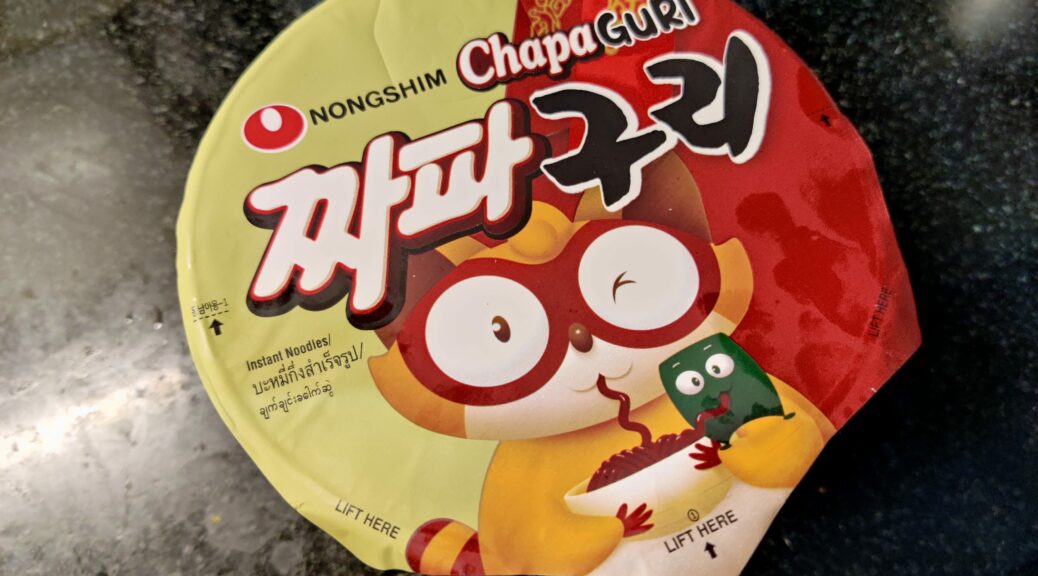I was browsing through the online grocer from whom I usually buy my instant noodles and other Asian groceries. While looking around for the usual Shin Ramyun and Kimchi Ramyun, I came across an item not usually seen in India. You can usually spot some varieties of the the extremely spicy Buldaak – popular in India for expected reasons, but way too spicy for my palate. But this was different and didn’t look spicy. It was called Chapaguri.
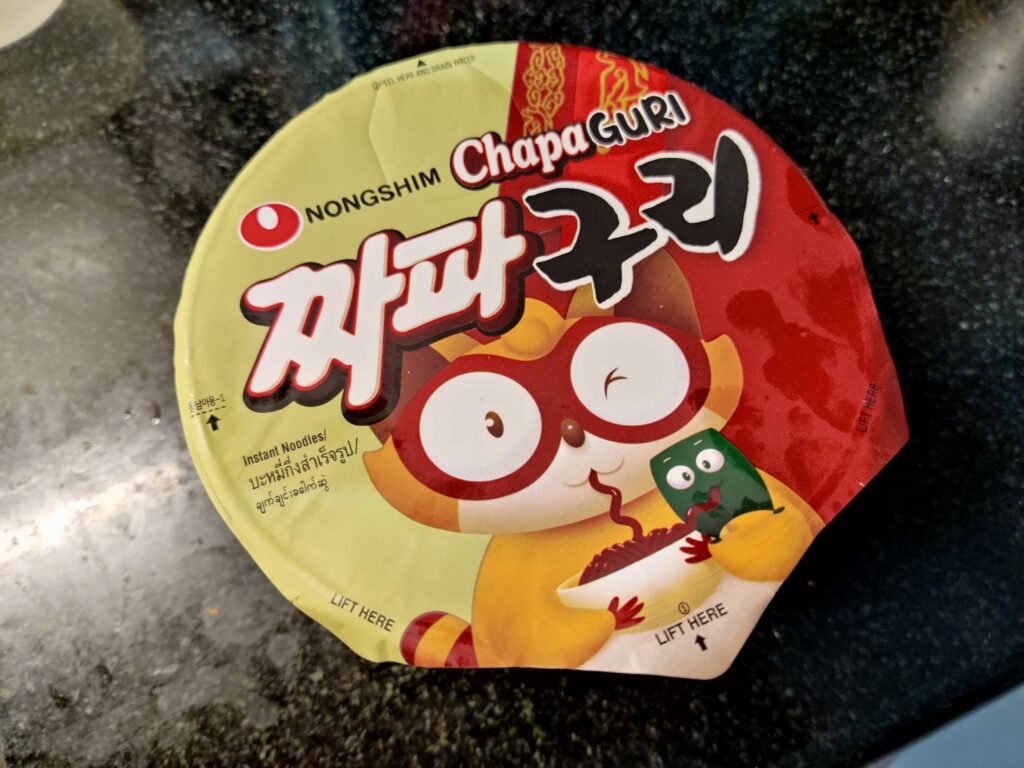
I didn’t know what it was and even though I wanted to try it out, I decided to find out what it was first.
Chapaguri seems to be the new in thing with Korean food. But what is it really? A fusion of fusions, it’s basically a combination of two popular Korean instant noodle dishes – Chapagetti and Neoguri. Koreans are known to love their instant ramen, usually called ramyun, and often experiment with them to make them even better. Most of it is in the form of add-ons, but with Chapaguri, it’s actually mixing two different varieties that strangely complement each other.
One of the two – Chapagetti, is in itself a fusion of jajangmyeon and spaghetti. The thicker spaghetti is treated somewhat like udon – the Japanese noodle that is actually much thicker. Neoguri on the other hand, is a seafood flavoured instant ramen.
When the two are mixed together, you get chapaguri, or ram-don from the words ramen and udon. It’s popularity outside of Korea is often attributed to the popular 2019 Korean movie Parasite where ram-don was shown. Which probably explains why it showed up at my online grocer.
So I thought I’d give it a try. I have had jajangmyeon before and didn’t particularly like it. Maybe it was the black colour or the strong, slightly bitter taste that takes some getting used to. But that was way back in 2006, when I was still an absolute neophyte to Korean food and still relatively inexperienced with Asian food.
With Chapaguri, the jajangmyeon is mixed with Neoguri, which I had hoped would dilute the taste of the jajangmyeon’s strong black-bean sauce. And even though I hadn’t had Neoguri either before, I have had somewhat similar seafood flavours from other brands and I generally quite like them.
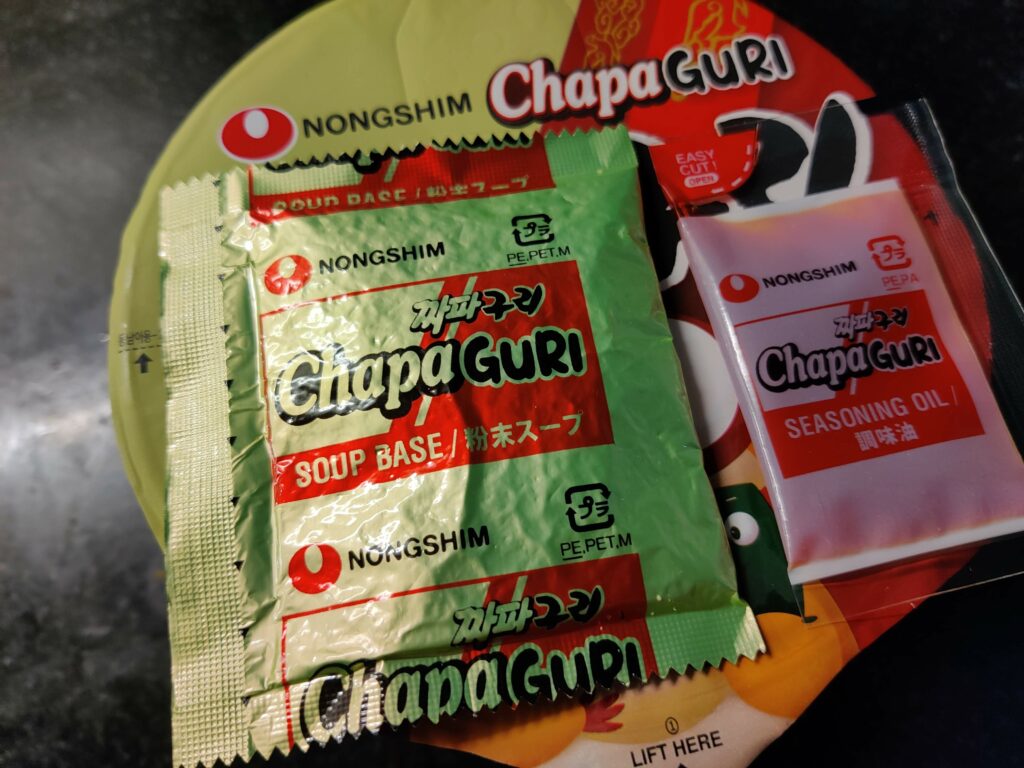
I generally prefer noodle soups, but this of course is not a soupy kind. You pour hot water into the container, leave it for 4 minutes and then strain the water out from other other side of the container that has a strainer built into the paper lid. You then mix in the flavour powder and oil with the noodles and a bit of the remaining water.
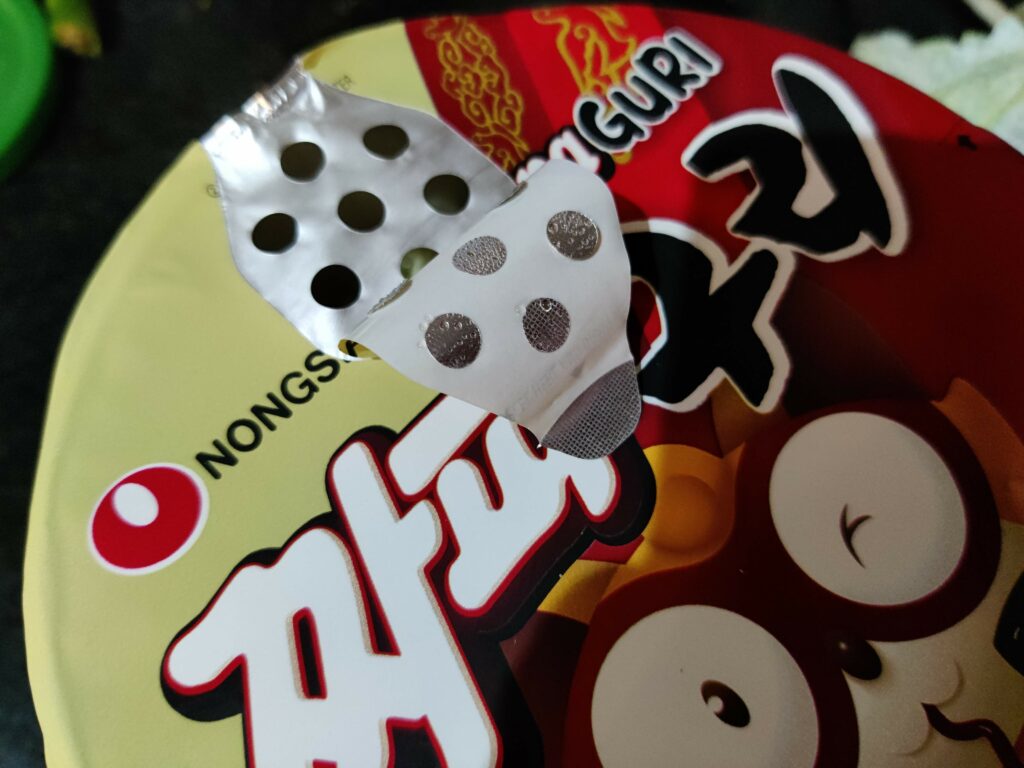
So how did I like it? To be honest, it didn’t taste great to begin with, but the taste grew on me. You get the strong umami from the black bean paste of the jajangmyeon, with a very faint bitterness. The spicy seafood flavour that I expected from the Neoguri is there but very subtle.
The looks are as you would expect it – a slightly less black version of jajangmyeon – almost a little brown. They are quite generous with the assortment of toppings too. Along with the usual dehydrated vegetable bits, you also get some kelp and some cat-face shaped surimi slices. Surimi is reconstituted meat and egg often used as imitation crab meat. The kelp and surimi not only add to the taste but also make the dish look more appealing and exotic.
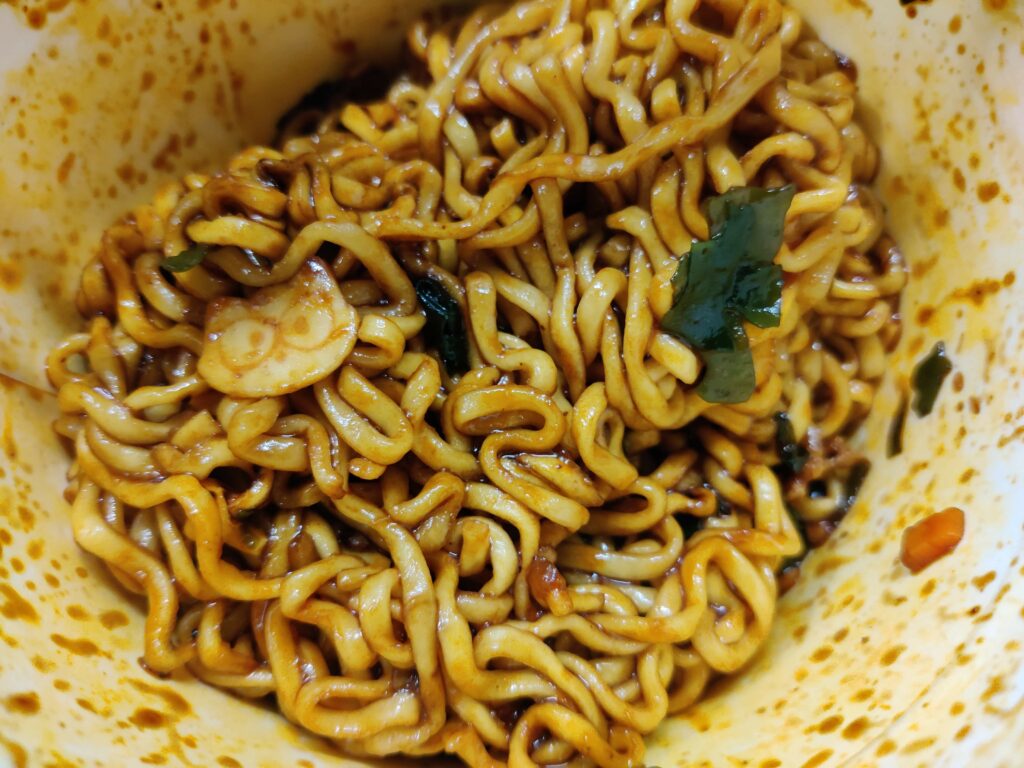
As I was close to finishing my bowl of Chapaguri, I was liking it more and more. I suppose it’s a bit of an acquired taste that takes some getting used to. By the time I finished it, I was already looking forward to the next one.
